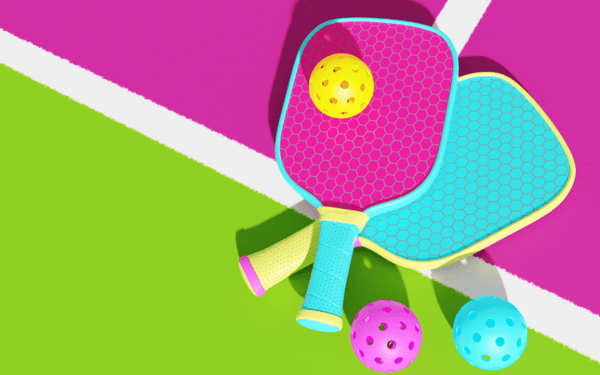No Products in the Cart
If you want to master the pickleball game, it’s important to understand its unique language. The jargon of pickleball, rich and varied, mirrors the game's eclectic blend of tennis, badminton, and ping-pong. Whether you're a beginner picking up the paddle for the first time, or a seasoned player looking to deepen your understanding of the game, knowing these terms is crucial.
This comprehensive guide to pickleball terms will not only enhance your knowledge but also enrich your experience on the court. As you familiarize yourself with these terms, you'll find your gameplay improving, your strategies becoming more nuanced, and your enjoyment of the game deepening.

Ace: A serve that is not touched by the opponent, resulting in a point.
Backhand: A shot hit with the back of the dominant hand facing the ball.
Banger: A player who primarily hits powerful shots.
Baseline: The line at the back of the pickleball court.
Baseline Rally: Exchanging shots from the baselines.
Blocking Shot: A defensive shot used to counter powerful drives.
Carry: An illegal shot where the ball is carried or thrown.
Centerline: The line that divides the service areas on the court.
Chain Link: A type of paddle with small holes, used for less rebound.
Crosscourt: A shot that travels diagonally across the court.
Dead Ball: When play is stopped due to a fault or other reason.
Deep Serve: A serve that lands near the baseline.
Dink: A soft shot aimed just over the net into the non-volley zone.
Double Bounce Rule: A rule that requires the ball to bounce once on each side before volleys are allowed.
Drive: A low, fast shot aimed straight over the net.
Drop Shot: A soft shot that barely goes over the net, landing close to it.
Edge Guard: The protective rim around the edge of the paddle.
Erne: Jumping from outside the court to hit a volley, avoiding the non-volley zone.
Fault: A violation of the rules that stops play.
Flip Shot: A shot with a quick upward and forward paddle motion, used close to the net.
Foot Fault: Stepping into the non-volley zone during a volley or on the baseline while serving.
Forehand: A shot hit with the palm of the dominant hand facing the ball.
Groundstroke: A shot hit after the ball has bounced once.
Half-Volley: Hitting the ball immediately after it bounces.
Hinder: Any element or occurrence that impacts play, like a stray ball on the court.
Kitchen: The non-volley zone near the net.
Let: A serve that hits the net but lands in the correct service area, leading to a reserve.
Line Shot: A shot that travels close and parallel to the sideline or baseline.
Lob: A high-arcing shot over the opponent's head.
Non-Volley Zone: Another term for the kitchen.
Overhead Smash: A powerful downward shot.

Poach: Taking a shot that would typically be played by your partner.
Punch Volley: A quick, short swing used to hit a volley.
Rally: A series of back-and-forth shots.
Rally Score: A scoring method where points can be won by both serving and receiving teams.
Referee: An official who enforces the rules during tournaments.
Serve: Starting the play by hitting the ball into the opponent’s court.
Server Number: In doubles, indicates whether the player is the first or second server.
Sideline: The line that runs perpendicular to the net and marks the court's boundaries.
Side Out: A change in service possession due to a fault by the serving team.
Stack: A doubles strategy where players stand on the same side of the court.
Switch: In doubles, players switching sides during or between games.
Third Shot Drop: A soft shot after the serve and return, aimed to land in the kitchen.
Topspin: A type of spin where the ball rotates forward, causing it to dip and bounce forward.
Transition Zone: The area between the baseline and the non-volley zone.
Unforced Error: A mistake made under no pressure, leading to point loss.
Upset: Defeating a higher-ranked or more experienced player or team.
Volley: Hitting the ball before it bounces.
Warm-up: Pre-game exercises or practice to prepare players.
Zoned Out: Losing focus during the game.
Understanding these 30 terms is like unlocking a new level of proficiency in pickleball. They provide a linguistic map to navigate the various aspects of the game, from basic rules to complex strategies. As you incorporate these terms into your pickleball repertoire, you'll find yourself not just playing the game, but living it. Whether on the court during an intense rally or discussing strategy with teammates, these terms will be your guideposts, ensuring you're always at the top of your game. Embrace the lingo, and let it guide your journey in the exciting world of pickleball.
For more pickleball-related articles visit BorntoRally blog.